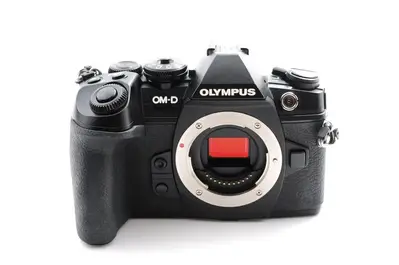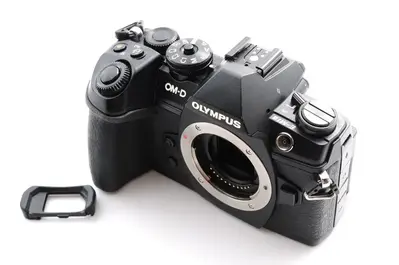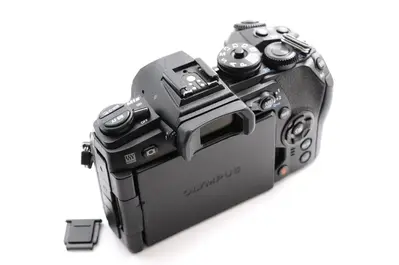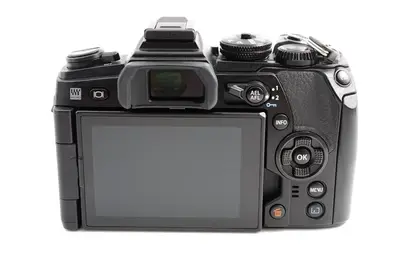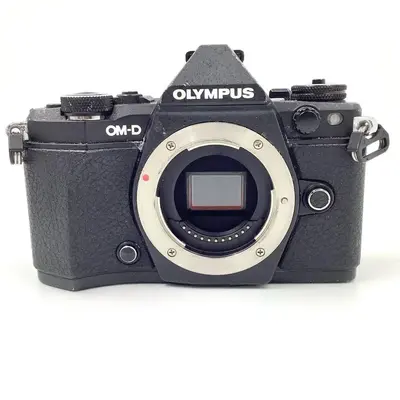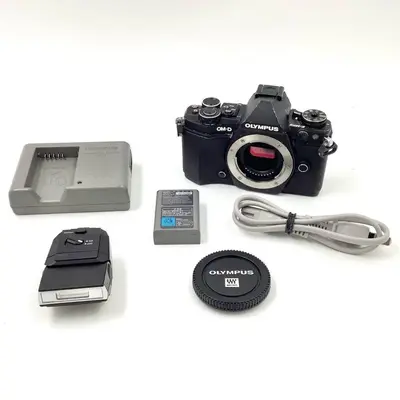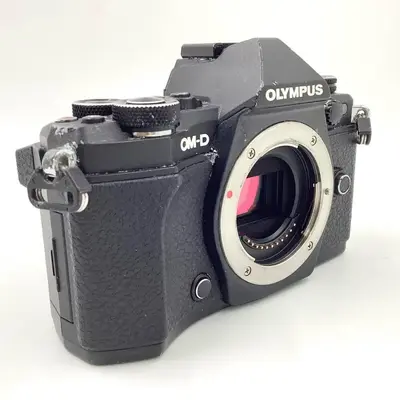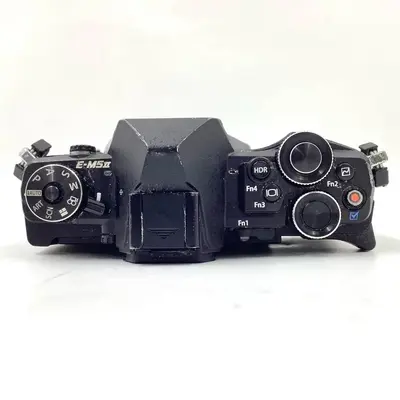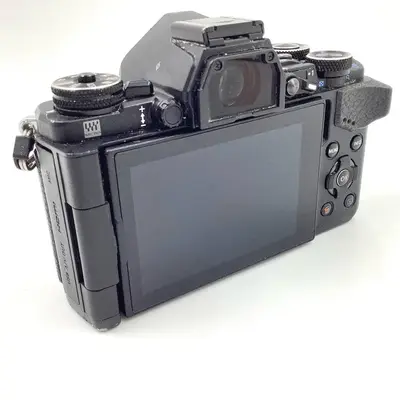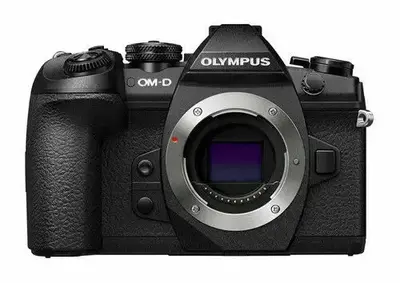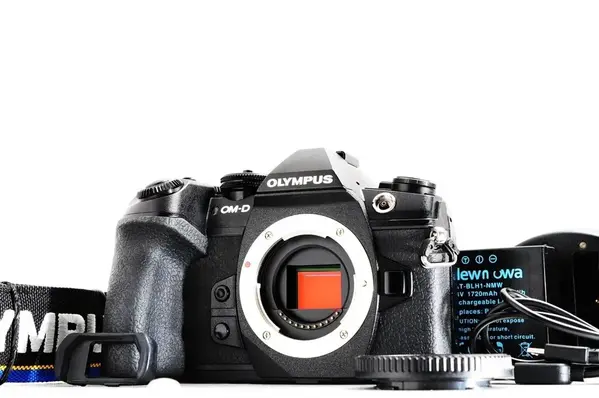
Olympus Om-d e-m1 mark ii
| Brand | Olympus 2016 |
| Model | V207060BU000 |
| Released Year | 2016 |
| Type | Digital Cameras |
| Series | Om-d |
| Color | Black |
| Optical Zoom | 3.3x |
| Status | Active |
Quick view
Overview
The Olympus OM-D E-M1 Mark II is a mirrorless digital camera featuring a 20.4-megapixel Live MOS sensor in the Micro Four Thirds format. It incorporates the TruePic VIII image processor, enabling high speed performance including continuous shooting up to 60fps using electronic shutter. The camera boasts a sophisticated 121-point all cross-type phase-detection autofocus system that improves precision and tracking. 5-axis in-body image stabilization compensates for various types of shakes and vibrations for sharper images and smoother video. The camera supports 4K UHD video recording at 30fps, offering advanced video capabilities. Its rugged magnesium alloy body is weather-sealed, making it suitable for professional use in challenging environments.
Connectivity options include built-in Wi-Fi for remote control and image transfer. The camera supports a wide ISO range from 200 to 25600, expandable to 64-25600, ensuring good low-light performance. The electronic viewfinder has a high refresh rate and resolution, providing a clear and lag-free framing experience. Olympus designed the OM-D E-M1 Mark II with dual SD card slots and advanced features like Pro Capture mode to meet the demands of action and sports photography.
Specifications
| MPN | V207060BU000 |
| UPC |
|
| Model | Olympus OM-D E-M1 Mark II |
| Digital Zoom | 4x |
| Color | Black |
| Battery Type | Lithium-Ion, Manufacturer Specific, Lithium, InfoLithium |
| Connectivity | Built-in Wi-Fi, USB 3.0, HDMI output |
| Screen Size | 3 in |
| California Prop 65 Warning | Yes |
| Series | Olympus OM-D |
| Type | Mirrorless Interchangeable Lens |
| Maximum Resolution |
|
| Optical Zoom | 3.3x |
| Brand Color | Black |
| Release Year | 2016 |
| Camera Type | Mirrorless Digital Camera |
| Sensor Type | Live MOS |
| Sensor Size | 17.3 x 13.0 mm (Micro Four Thirds) |
| Effective Pixels | 20.4 megapixels |
| Image Processor | TruePic VIII |
| Lens Mount | Micro Four Thirds |
| Autofocus Points | 121 phase-detection all cross-type points |
| Image Stabilization | 5-axis in-body image stabilization (up to 5.5 stops) |
| Continuous Shooting Speed | Up to 60 fps (with electronic shutter, JPEG only) |
| Viewfinder | 2.36M-dot OLED electronic viewfinder |
| LCD Screen | 3.0-inch fully articulating touchscreen, 1.04M dots |
| ISO Range | 200-25600 (expandable 64-25600) |
| Video Recording | 4K UHD at 30p, Full HD at 60p |
| Shutter Speed Range | 1/8000 to 60 seconds |
| Build | Magnesium alloy, weather-sealed |
| Storage Media | Dual SD card slots, UHS-II compatible |
| Battery | BLH-1 Lithium-ion battery |
| Dimensions | 134.1 x 90.9 x 68.9 mm |
| Weight | Approx. 574 grams (body only) |
| Features | Body Only |
| Country/Region of Manufacture | Japan |
Images
Key Advantages
The OM-D E-M1 Mark II’s key advantage is its exceptional autofocus system that greatly enhances speed and accuracy, especially in tracking moving subjects. Its 5-axis in-body image stabilization system provides up to 5.5 stops of shake correction, which benefits both stills and video recording. The camera’s continuous shooting capability is outstanding with up to 60fps in silent shooting mode, ideal for sports and wildlife photography. Robust build quality with weather sealing ensures reliability in harsh conditions. The inclusion of 4K video recording opens creative possibilities for videographers. Additionally, dual SD card slots allow ample storage and backup options during professional shoots.
Limitations
Despite its many strengths, the OM-D E-M1 Mark II has some limitations. The Micro Four Thirds sensor, while capable, has a smaller size than APS-C or full-frame sensors, leading to comparatively lower dynamic range and low-light performance. Battery life, though improved over its predecessor, may still require carrying extra batteries for extended use. The menu system can be complex and might pose a learning curve for beginners. Some users find the touchscreen interface less responsive compared to competitors. Video recording is limited to 30fps at 4K, lacking higher frame rates that some rivals offer. The camera is also relatively pricey compared to entry-level mirrorless models.
FAQ
What sensor does the Olympus OM-D E-M1 Mark II use?
It uses a 20.4-megapixel Live MOS sensor in the Micro Four Thirds format.
Does the OM-D E-M1 Mark II have image stabilization?
Yes, it features a 5-axis in-body image stabilization system providing up to 5.5 stops of correction.
Can this camera shoot 4K video?
Yes, it supports 4K UHD video recording at up to 30 frames per second.
What is the autofocus system capability?
It includes a 121-point all cross-type phase-detection autofocus system for fast and accurate focusing.
Is the OM-D E-M1 Mark II weather-sealed?
Yes, its magnesium alloy body is fully weather-sealed for durability in adverse conditions.
What storage media does it use?
The camera uses dual SD card slots compatible with UHS-II cards.
Is the camera suitable for beginners?
While the OM-D E-M1 Mark II offers extensive features, its complex menu and operation might be challenging for beginners.
Disclaimer
The content on is provided for general informational purposes only. We do not guarantee the accuracy, completeness, or reliability of any information, specifications, or visuals presented on the site.
is not responsible for any content, images, or data uploaded or shared by users. Users are solely responsible for the content they submit.
We may include links to third-party websites for convenience. We do not endorse or take responsibility for the content or policies of any external sites.
Use of the site is at your own risk. Always verify critical information independently before making decisions based on content from this website.

